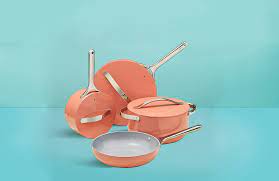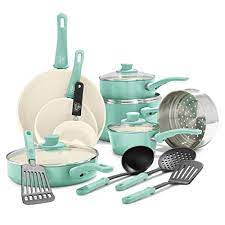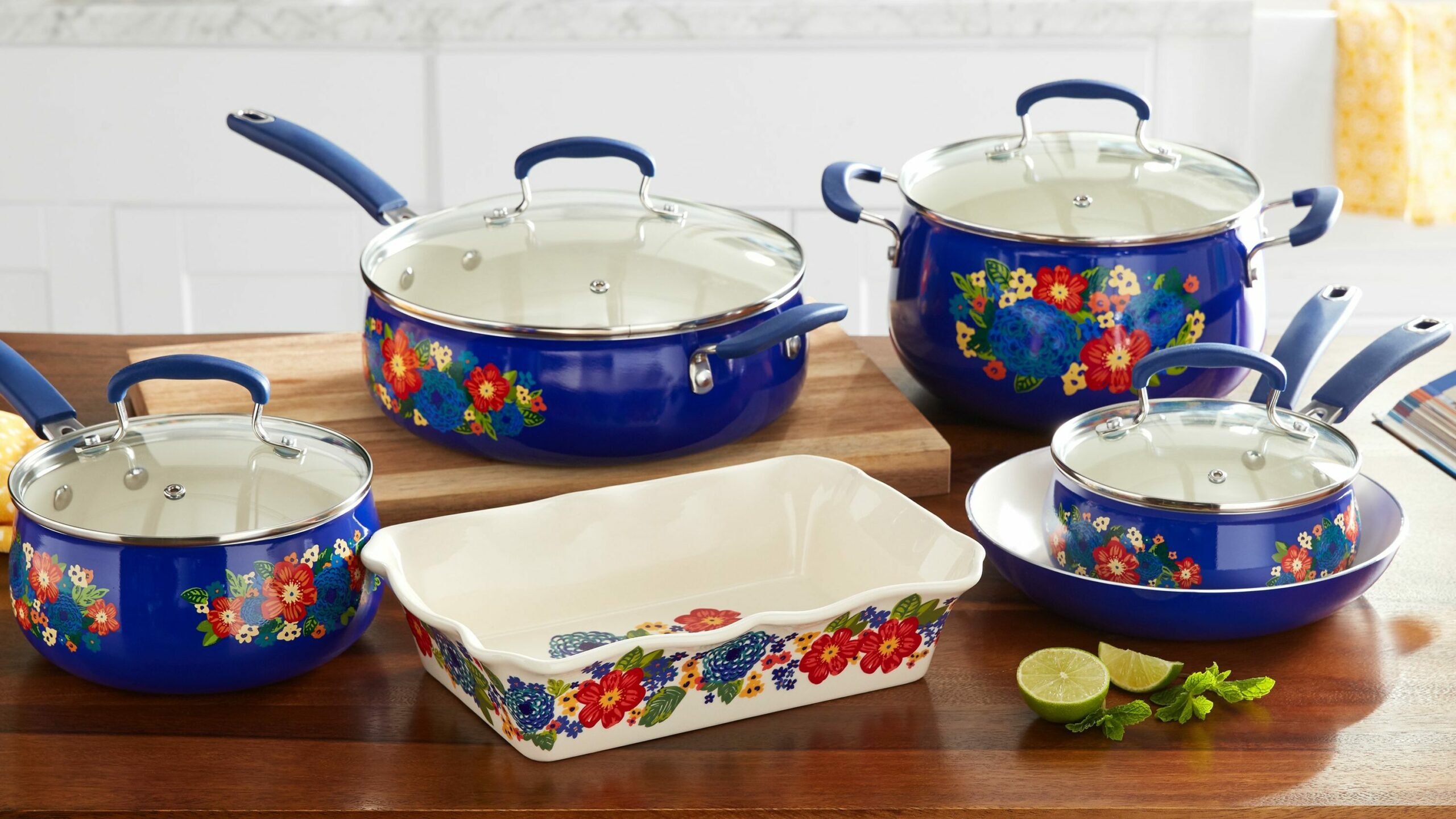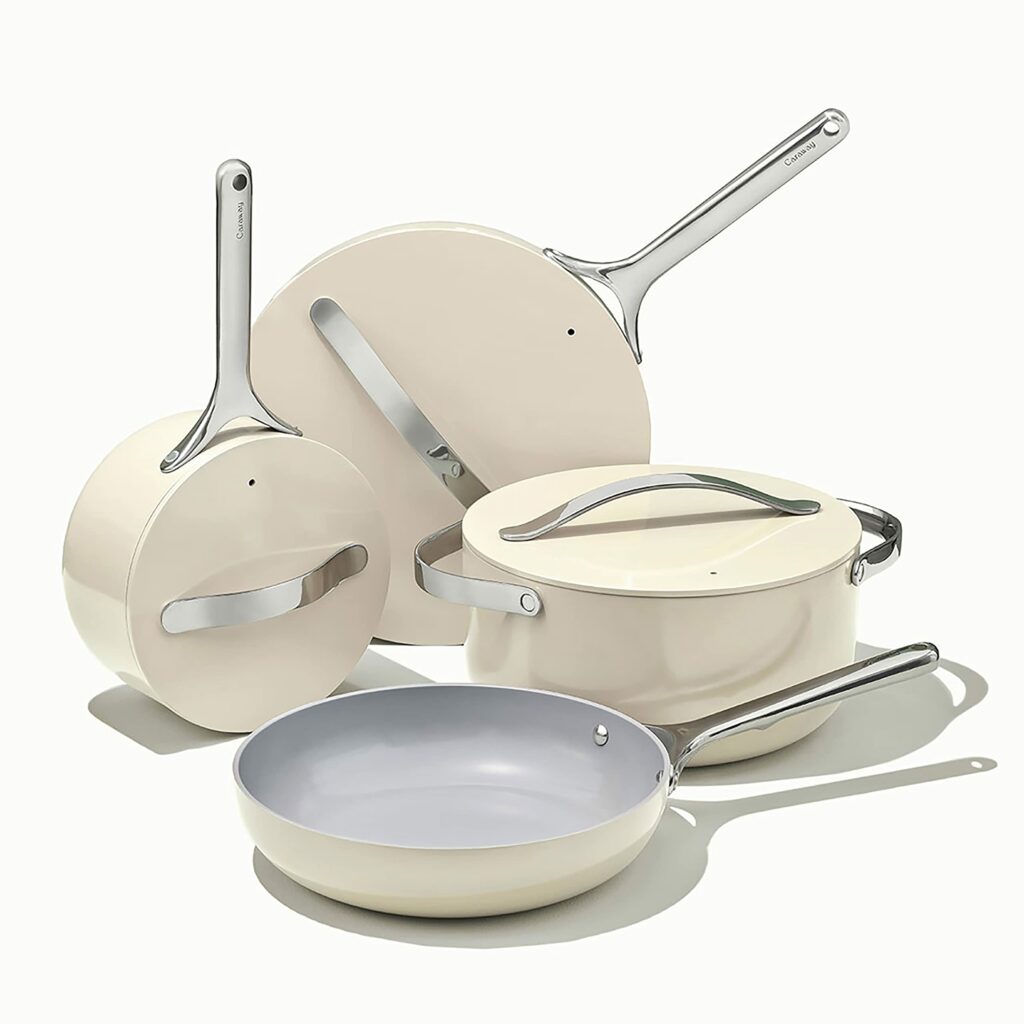Several factors can affect the danger behind the usage of ceramic kitchenware. While evaluating the threats, it is important to consider two major parts of each vessel: a ceramic non-stick coating and a metal coating under it. Let’s start with the first part.
You may also like: 5 Best Copper Cookware Sets Reviews
The only component of a non-sticking coating that may arise concern is silica. It needs to be mentioned that ceramic kitchenware is not the only category of goods that contain it; this list also includes silicon kitchen utensils like silicone baking molds and those made of glass as well.

As for the negative effect that silica may have, there’s no scientific evidence for it. As the research “Direct Human Contact with Siloxanes (Silicones) – Safety or Risk Part 1. Characteristics of Siloxanes (Silicones)” states, silicones are “… commonly regarded as non-toxic to humans and the environment, or toxic to a very small extend…” (to read more, follow the link: https://www.ncbi.nlm.nih.gov/pmc/articles/PMC4884743/)
There are some expert reservations regarding the issue, but the aforementioned citation seems to be a general conclusion. It also needs to be mentioned that there has been no special research conducted about the topic of the possible toxic effects of ceramic-coated kitchenware.
Let’s now consider the following layer of kitchenware concerned – a metal coating.
You may also like: 7 Best Ceramic Knives On The Market
Metal leaking can be observed if a user accidentally scrapes the upper part of the vessel, which is a ceramic layer. The question is whether metal emission is dangerous, and it depends on two major factors: the material of the metal coating and the area of its contact with food.

The majority of ceramic non-stick kitchenware has an aluminum base coating or one made from its alloys. The aluminum itself has been proven to be cancerogenic and neuro-degenerative. Due to this, strict standards of aluminum content have been imposed.
The European Food Safety Authority(EFSA) published an extensive report regarding the maximum amount of aluminum depending on various health factors. What is important is that aluminum toxicity is recognized, therefore it may arise concerns about the usage of aluminum-based kitchenware.
However, everything is not that simple. The thing is that aluminum comes to human bodies from different sources, such as food, food additives, and medicaments.
As we can see, aluminum that comes to the organism from metal scrapes of the kitchenware is added to that naturally consumed. Is this additional amount of metal a reason to worry?
As the EFSA report suggests, cooking utensils can be the reason for the significant increase of aluminum in the human body.
However, there are many reservations regarding the issue since the patterns of aluminum emission are different for different categories of food. Anyway, some cases may lead to exceeding the aluminum limit due to the usage of bare aluminum kitchenware.
What conclusions can be derived from this passage? People should be aware of how aluminum kitchenware can affect their bodies. On the other hand, the area of contact between food cooked and metal scrapes on the kitchenware are relatively small.

There has been no special research regarding metal scrapes’ influence on human health, but it’s worth controlling the level of utensils wear not to allow excessive aluminum emission.
What also needs to be said is everything that has been said above is based on the assumption that the metal coating layer of ceramic utensils is made of pure aluminum. Unfortunately, some cases show that aluminum alloy used for kitchenware manufacturing may contain different heavy metals.
You may also like: 7 Best Induction Cookware Sets On The Market
It’s hard to make sure if the base of the kitchenware was made of food-grade or non-food-grade aluminum alloy. There’s always a risk of getting cheap, low-quality products. Manufacturers can reach a lower price as well by adding heavy metals to the alloy to improve its characteristics without paying much additional money.

In Europe, the amount of other metals in aluminum alloys is strictly regulated by Regulation (EC)1935/2004 (Framework Regulation on materials and articles in contact with foods (EC, 2004)), but it’s hard to follow is the utensils made in other countries meet the regulations imposed in this document.
What’s more, it can be assumed that it is the ceramic layer that has contact with food, not the metal coating. Consequently, the metal coating can be made of any alloy and doesn’t have to meet food-grade aluminum alloy standards.
Manufacturers that sell cheap and low-quality products can use it, and there have been no calculations performed to find out what is the percentage of kitchenware that has a metal coating made of non-food-grade alloy concerning the whole number of items produced.
You may also like: 7 Best Nonstick Cookware Reviews
In conclusion, it can be said that there are still many blank spaces regarding the issue of the potential harm the usage of ceramic utensils can have on the human’s body.
The ceramic layer doesn’t represent any danger, however, the same cannot be surely said about the metal coating. Therefore it’s better to follow the necessary usage and storage recommendations and change the utensils when they show noticeable signs of wear.
